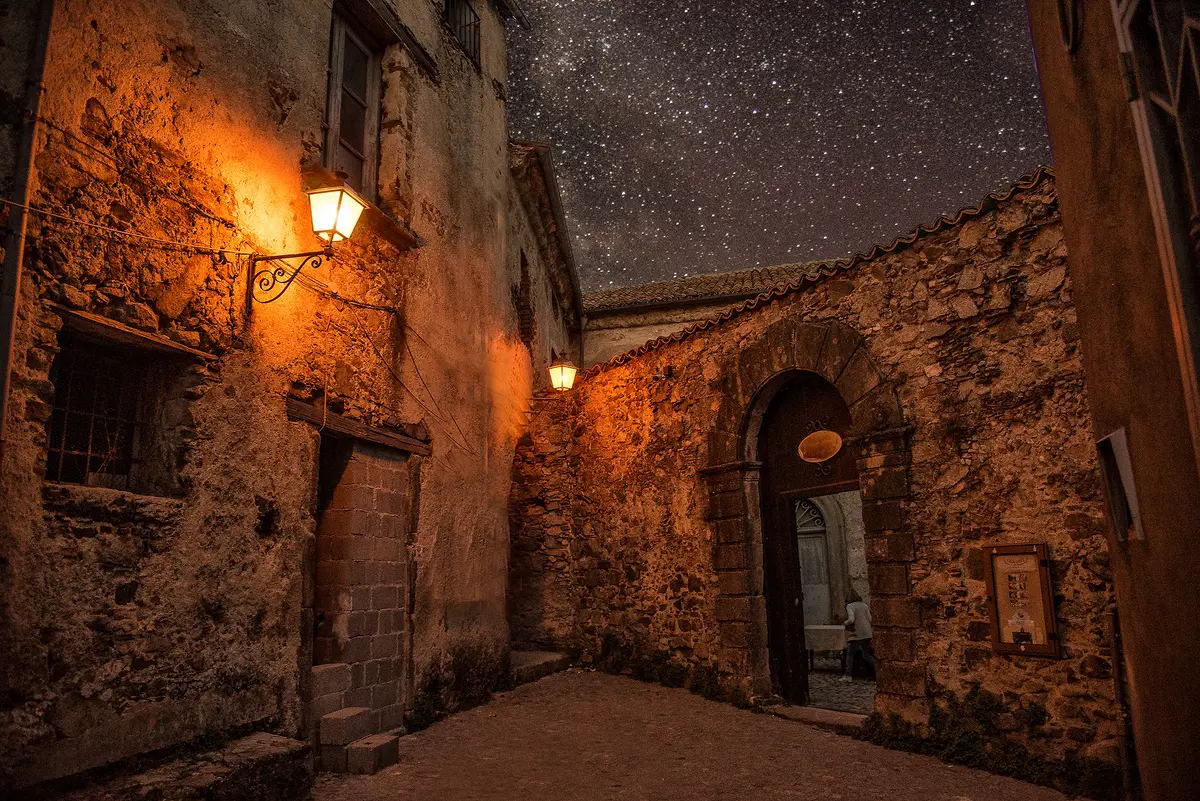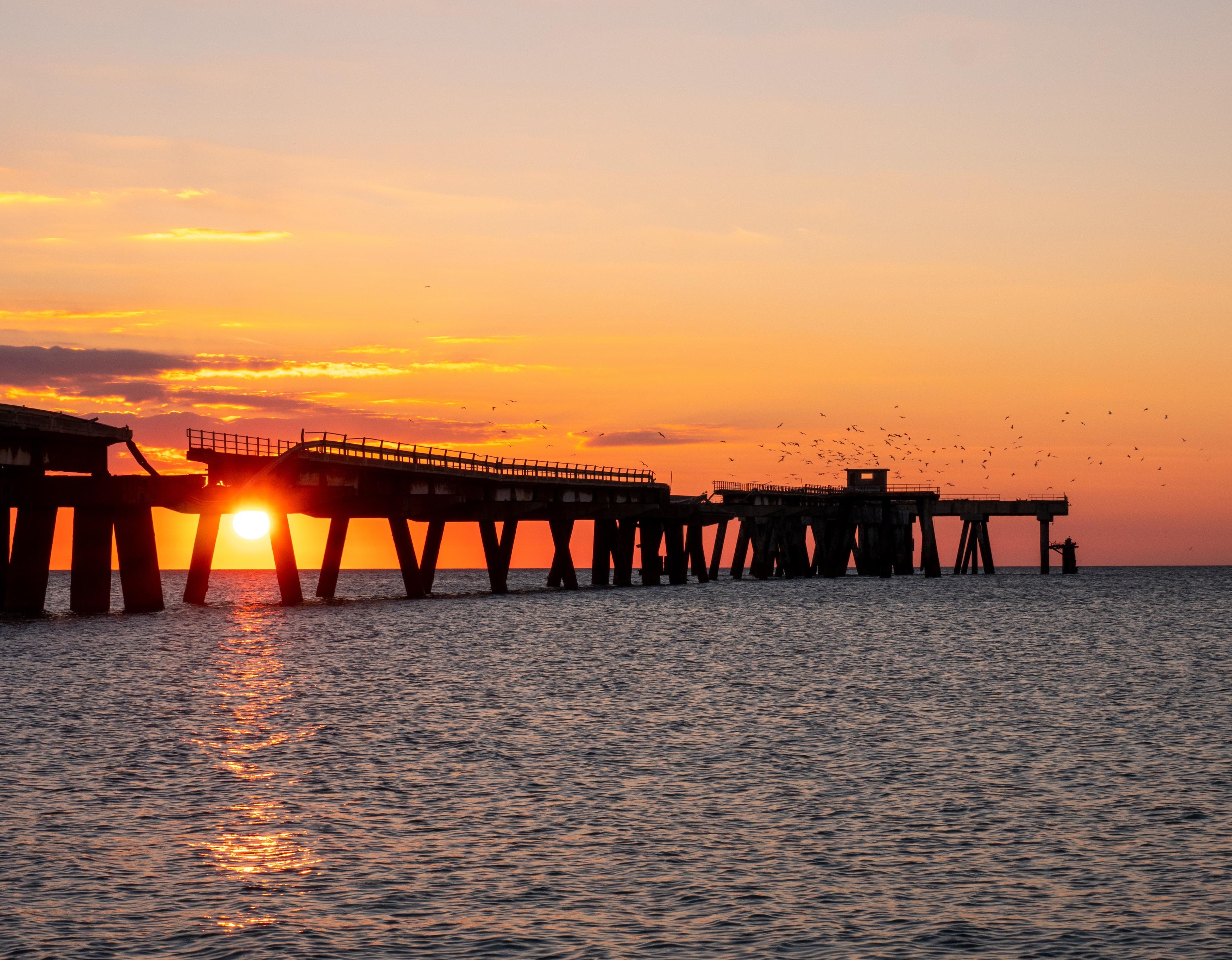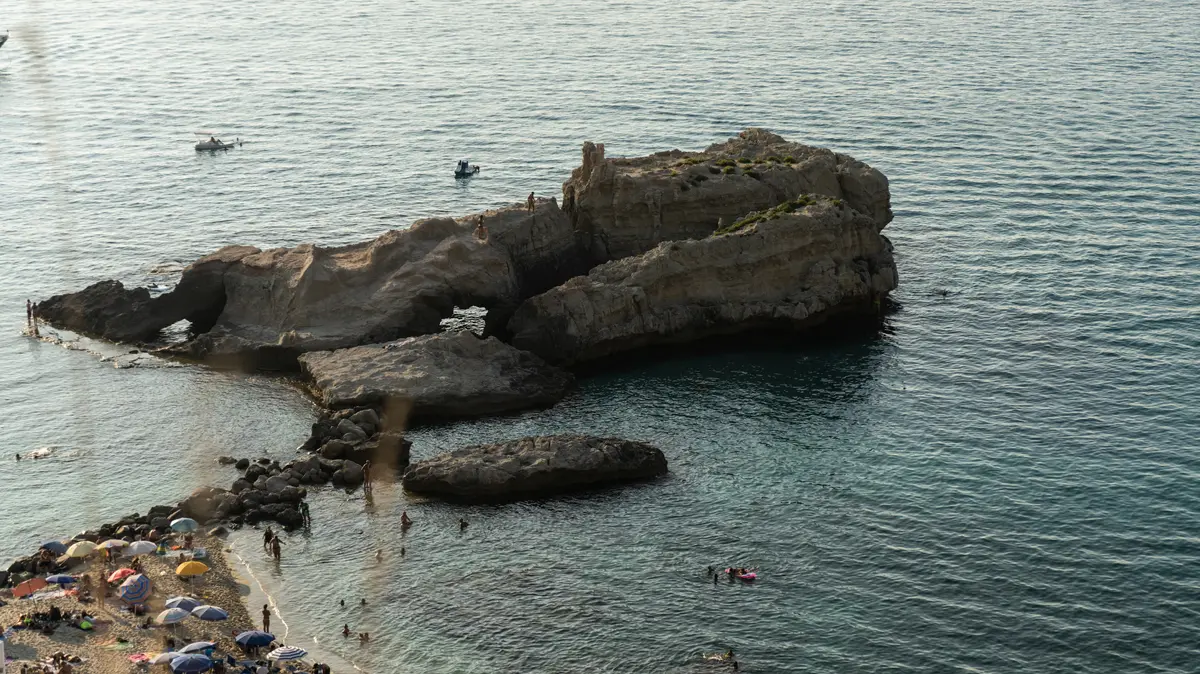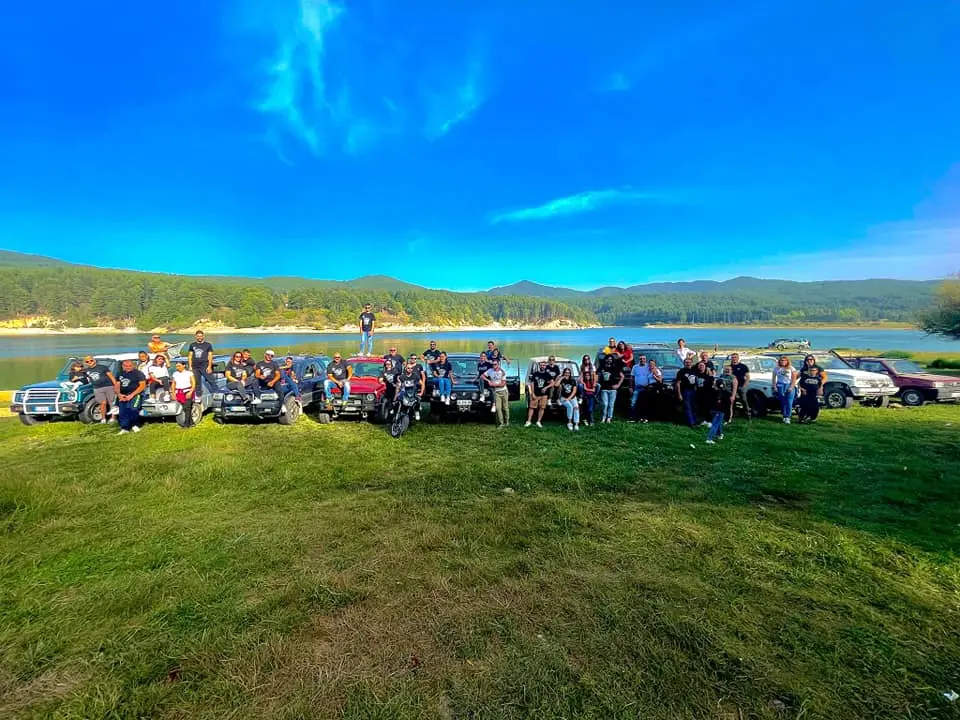Itinerary among the places of cinema in Calabria
Do you want to discover a Calabria of films? Come to the places of Calabrian cinema

Cultural historian
San Giovanni in Fiore - Francesco Granato
Travel information
Category
Cultural historian
Target
For all
Is cinema your passion? Do you want to discover film locations? Calabria, a "sea-mountain" land of breathtaking landscapes, is a real open-air set.
From the rugged and uncontaminated scenery of the Aspromonte National Park to the Ionian and Tyrrhenian coasts, passing through the so-called "ghost towns" and the streets of Calabria's main cities, Calabria's film tourism itinerary is the experience that allows you to discover a region worthy of films.
The journey among the film sets in Calabria is also the right opportunity to get to know an authentic universe, made up of local communities and hospitality: historic centres, conviviality and views that have inspired some of Italy's leading filmmakers.
The names and faces that have made the history of Calabrian cinema, from directors Gianni Amelio, Mimmo Calopresti and Fabio Mollo to the actors best loved by the general public (Peppino Mazzotta, Raoul Bova, Francesco Colella, Elisabetta Gregoraci, Alessio Praticò and many others), act as an imaginary guide to this fascinating itinerary of film tourism in Calabria.

Oriolo
Let's start from the end, or rather, from some of the most recent productions, which have transformed the Costa degli Achei into one of Calabria's most evocative film sets.
For the filming of Fabio Segatori's Don Quixote, starring Alessio Boni in the role of Cervantes' hero, Calabria fully competes with the scenarios of the Spanish La Mancha: Ionian gullies, medieval castles, torrents and pristine beaches are perfect Calabria film sets to provide the backdrop for the visions of the knight errant.
The places of cinema in Calabria? The Blue Flags of the municipalities of Trebisacce, Rocca Imperiale, Roseto Capo Spulico and San Lorenzo Bellizzi.
The medieval historic centre where Don Quixote roams in search of adventure? The charming village of Oriolo, among The Most Beautiful Villages of Italy in Calabria.
Nestling at the foot of its castle, at the foot of the Pollino National Park, the seventeenth-century village appears suspended in time, as if at any moment you could really run into a medieval character.

Cirò Marina-Carfizzi
The second stop on our film tour along the Costa degli Achei takes us to Cirò Marina, in the province of Crotone, and among the inland villages with an arbëreshë (Italo-Albanian) ethnolinguistic minority.
We are on the Calabria cinema set of the film La festa del ritorno, based on the novel of the same name by the Calabrian writer Carmine Abate (originally from Carfizzi). A story of \"going and returning\", as the title suggests, referring to an emigration that still needs to be told, as does the folkloric cross-section of the Albanians of Calabria.
Directed by Lorenzo Adorisio, with Calabrian actors Alessio Praticò, Carlo Gallo, Anna Maria De Luca and Annalisa Insardà, the film exalts film locations in Calabria ranging from the coast of Punta Alice, the Shrine of Apollo Aleo and Torre Melissa, to inland locations in the Crotone area, such as Cirò, Carfizzi, Crucoli and Verzino.
The Cirò Marina area is one of Calabria's film sets offering unique Blue Flag and Green Flag sea scenery, as well as being famous for the presence of the Gaglioppo vine, from which the prized Calabrian wine Cirò CDO is made.

Isola di Capo Rizzuto
Among the film sets in Calabria there is a truly "cult" one, capable of capturing the imagination of directors, scriptwriters and actors of every era.
It is the fortress on the water known as Le Castella, alias the Aragonese Castle in the municipality of Isola Capo Rizzuto (KR).
This imposing castle suspended over the Ionian Sea, in the "Isola Capo Rizzuto" Protected Marine Area, and linked to the mainland by a thin strip of land, is the protagonist of some of the films that have made the history of Italian cinema and still represents an important Calabrian film location.
The popular faces chosen by Pier Paolo Pasolini to star in The Gospel according to St. Matthew, a 1964 film that also saw some scenes in the Calanchi of the Marchesato, and the improbable crusaders in the retinue of Vittorio Gassman and Gian Maria Volonté in L'armata Brancaleone, a 1966 film by Mario Monicelli, have passed through here.

Badolato
Among the film sets in Calabria that also feature among The Most Beautiful Villages in Italy, Badolato, on the Ionian coast in the province of Catanzaro, has hosted several famous short films over the years.
From the provocation that brought it to national attention in the 1970s as a "village for sale", an extreme attempt to repopulate the village of Badolato, to the destiny that would see it enlivened by the Kurdish migrants of the first wave, Badolato can be said to have paved the way for contemporary docufilms with the experience of German director Wim Wenders and Il volo, a 2010 short film starring Luca Zingaretti.
Since that first take, other young filmmakers have ventured into the seventeenth-century village of Badolato, shooting award-winning short films in its alleys.
A few examples? U figghiu (2021), by Saverio Tavano, starring Badolato actor Francesco Gallelli, together with Fabrizio Ferracane and Anna Maria De Luca; Il paese interiore (2021) and Il mare nascosto (2024) by Luca Calvetta, both starring Ascanio Celestini.
Africo-Bova
The fifth stage of the film tour in Calabria takes us straight to the heart of the Aspromonte National Park, one of Calabria's wildest and most legendary film locations.
The Aspromonte massif and its abandoned villages are the poignant set of Aspromonte - La terra degli ultimi (2019), a film by Mimmo Calopestri starring Valeria Bruni Tedeschi and a cast of Calabrian actors including Francesco Colella, Marcello Fonte and Marco Leonardi.
Places of the soul such as Africo and Roghudi become film sets in Calabria with a strong emotional impact, a must-see. The same places provide the backdrop for the harsh story of Black Souls (2014), a film by Francesco Munzi based on the novel of the same name by Calabrian writer Gioacchino Criaco, starring Fabrizio Ferracane and Calabrian actors Peppino Mazzotta and Marco Leonardi.
A perfect stop in the cinematic Aspromonte is the town of Bova, a small Greek capital where one can discover the secrets of the ethnolinguistic minority that still speaks the ancient Greek of Calabria and preserves its own customs and traditions.
Reggio Calabria
Those who draw on the filmic imagery of a Calabria tied to stories of justice and injustice, suspended between beauty and drama, recognise in the face of Reggio Calabria and its province some of the "cult" scenes of important films and TV series related to these themes.
Fascinating glimpses of the historic city centre, both in broad daylight and at night, with the lights on the Strait of Messina, accompanying the story of Il giudice meschino (2014), a TV miniseries by Carlo Carlei starring Luca Zingaretti, inspired by the novel of the same name by Calabrian writer Mimmo Gangemi.
How can one fail to recognise Reggio's splendid "Falcomatà" Seafront, punctuated on the parallel street by Rabarama's contemporary works of art, the Cathedral and the "Cilea" Theatre along Corso Garibaldi, or the escalator leading to the Giudecca district?

Gioia Tauro-Palmi
If for years the stories of the 'ndrangheta reduced Calabria to a stereotype, today, the new generations of filmmakers use them as a backdrop against which to project new and more subtle denunciations, which have the courage to narrate even marginal communities.
Examples of this are the films 'A ciàmbra (2017) and A Chiara (2021), by director Jonas Carpignano, both in Calabrian dialect, set in the uncomfortable contexts of the Gioia Tauro Plain (RC): the former, filmed in the Roma camp of the same name, casts little Pio Amato and Swamy Ruotolo (also the protagonist of the latter) on the scene, playing themselves in the Pasolinian manner.
The Port of Gioia Tauro is several times chosen as one of the film sets in Calabria to tell the story of international drug trafficking, as in the TV miniseries ZeroZeroZero (2020) written and directed by Francesco Sollima and inspired by the novel of the same name by writer Roberto Saviano.
Difficult stories told against a backdrop of absolute beauty, such as that of the Costa Viola and the seaside towns that characterise it, like Palmi, where we recommend a stop to enjoy the wonder of the Spiaggia della Tonnara and dell'Ulivo beach and to watch, in August, the spectacular procession of the Varia di Palmi (UNESCO Intangible Heritage).

Tropea
The cinema caravan in Calabria takes us to discover the so-called "Pearl of the Tyrrhenian Sea": Tropea, among The Most Beautiful Villages in Italy along the renowned Costa degli Dei, in the province of Vibo Valentia.
Of all the film locations in Calabria, one of the region's most iconic overlooks, photographed and loved by tourists from all over the world, is a must: we are of course talking about the Affaccio dei Sospiri, overlooking the famous cliff where the Shrine of the Madonna dell'Isola stands.
This scenery, surrounded by spectacular sea caves (such as the Palombaro Cave) and an old town centre perched on the cliff, is among the film sets in Calabria starring in several productions, including the successful RAI series Gente di mare (2005/7), which made the general public fall in love with Tropea's sea, Blue Flag, through the vicissitudes of the Harbour Master's Office imagined by Alfredo Peyretti and Vittorio De Sisti, starring Lorenzo Crespi and Valeria Gravina.

Lamezia Terme
Among the cinema sets of Calabria, the city of Lamezia Terme, in the province of Catanzaro, is the protagonist of a great return to the Italian screens.
Sandokan, the "Tiger of Malaya" born from the genius of writer Eugenio Salgari and protagonist of the 1976 script of the same name starring the fascinating Kabir Bedhi, is back today in the shoes of an equally fascinating Can Yaman, who finds the perfect setting on the Tyrrhenian coast of the Riviera dei Tramonti for a new RAI series by Jan Maria Michelini and Nicola Abbatangelo.
The pirates land in the former industrial area of Lamezia Terme and fight their adventurous battles along the coast, then move on to other locations (such as the aforementioned Calabria cinema set in Le Castella, KR).
The historical centre of Nicastro is, instead, the backdrop against which the story of Michele Scimone (alias, Beppe Fiorello) and Fatima (alias, Cristina Parcu), protagonists of the film L'afide e la formica (2021), by Calabrian director Mario Vitale, is set. A story of human and social redemption inspired by the traditional St. Anthony's Marathon, which every year runs through the streets of the centre to the summit on which stand the remains of the Norman-Swabian Castle.

Sila National Park
An unmissable stop on an itinerary dedicated to film tourism in Calabria are the Sila National Park and the so-called Calabrian Lakes Area, between the provinces of Catanzaro and Cosenza, the absolute protagonists of Regina (2020), a film by Calabrian director Alessandro Grande starring Francesco Montanari and Ginevra Francesconi.
We are immersed in timeless green nature, where we breathe "the best air in Europe" certified by a team of experts and the Sila wolf is the undisputed king of these woods. This is one of the most poetic places in Calabria, which can be visited by bike via the Parks Cycle Route, on a trek on foot or on horseback and, of course, with a boat trip between the lakes.
The historic centre and surroundings of San Giovanni in Fiore (CS), birthplace of the abbot Gioacchino da Fiore, are among the main locations chosen to set this delicate story of a father-daughter relationship.

Pollino National Park
Ready to descend into the bowels of the earth, into the centre of one of the world's deepest sinkholes?
No, we are not on a sci-fi movie set in Calabria, nor on an Indiana Jones-style action film, but at the mouth of the suggestive Abisso del Bifurto, known locally as the "Fossa del Lupo", in the municipality of Cerchiara di Calabria (CS).
The Abisso del Bifurto, one of the main wonders of the Pollino National Park, is an underground cavity that reaches a depth of 683 m, ranking 40th among the planet's sinkholes.
The fascinating discovery and documentation of this abyss, which took place in 1961 by an international team of speleologists, is recounted in the film Il buco (2021), by the award-winning director and documentary filmmaker of Calabrian origin, Michelangelo Frammartino.
Those who have seen the film, an absolute masterpiece of poetry, will relive the same emotions by reaching the Bifurto on a guided excursion; those who have not yet seen it will be surprised by the natural beauty of a film-like Calabria.

Alessandria del Carretto
To close the circle, our itinerary goes back to the origins, mentioning the man who was one of the pioneers of cinema and film sets in Calabria.
Without moving from the Pollino National Park, we reach the town of Alessandria del Carretto (CS) and immerse ourselves in the agro-pastoral and folkloristic atmospheres to which a great of Italian cinema, director Vittorio De Seta, dedicated his moving documentary I dimenticati (1959), from which, as the title suggests, the people of Calabria are first told about to the general television audience.
Set in Alessandria del Carretto, the film documents in full the traditional Pita Festival, an ancient arboreal ritual in the month of May, during which an enormous pine tree is debarked and hoisted into the town square as a cuccagna tree.
De Seta's work in Calabria is of extraordinary importance, as it has captured the truth of millenary rituals, of the life and work of a South that still partly represents us today.



